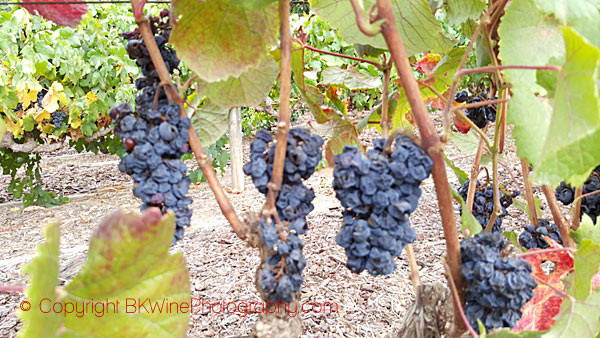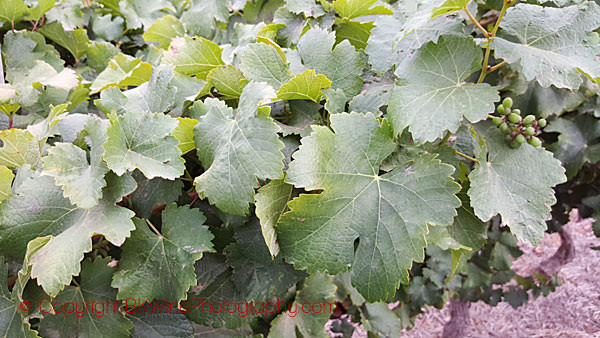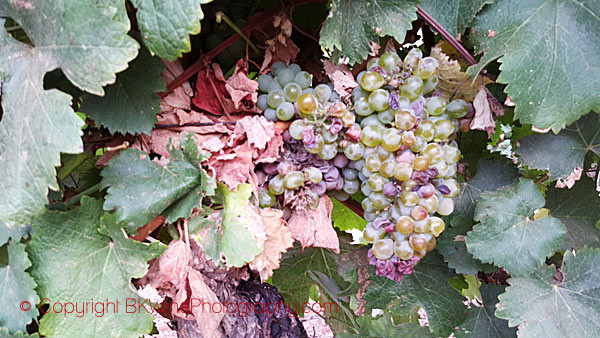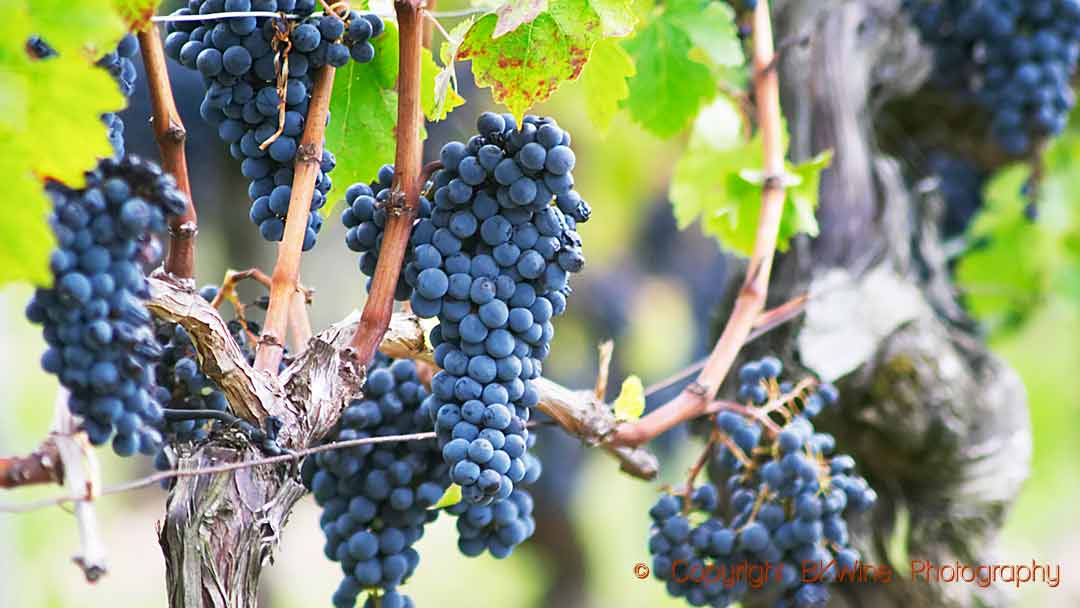So you want to be (like) a pro ampelographer? That’s what they call someone who is a botanic specialist focussed on the grape vine. Or maybe you don’t? Maybe you just want to know how to tell one grape variety from another. Or as they would say in South Africa, one cultivar from another (bear with me, I’m coming to why South Africa). Or even one varietaly as some linguistically misguided drinkers sometimes say. (A ‘varietal’ is an adjective. ‘Variety’ is the noun.) Or you are just curious. Or have nothing better to read.
These days the most reliable way to identify a grape variety is to do a DNA test (made famous in the wine world by the Swiss botanist José Vouillamoz). But few people carry around a DNA test kit in the vineyards.
Practice your skills in identifying grape varieties (or learn more about it) on one of our famous wine tours to the world’s most exiting wine regions and vineyards. Come on a wine tour with us!

So let’s get serious.
The most important clue to identify the grape variety is the leaf. It should be a full-grown leaf to properly show the characteristics. There are several things to look for. Here are the most important:
- The size
- The colour
- The overall shape
- What kind of “fingers” and “holes” does the leaf have
- Is it flat or waffley?
- Is it smooth or hairy? (Mainly on the back of the leaf) Or perhaps a little bit “dusty”?
- What is pattern and distribution of the “nerves”
- And much more
Second thing to look at is of course the grape bunches, although that is difficult unless it is close to harvest time. Here are some of the important things:
- Well, first is of course the colour…
- The size of the bunch
- The size of the berries
- The shape of the bunch. Is it conical? Cylindric? With two parts, a big main part and a small “ear” to the side?
- Tight or wide spread?
- Where on the vine is it attached?
- The hue of the colour
- Thickness of the skin
- And many more
There are other clues too:
- How do the branches grow?
- Are they rigid and self-supporting or tend to fall down on the ground?
- The colour of the wood and bark. Patterns.
- Look of the buds
- And much more
To take two examples: Merlot typically has big leaves with a waffley structure and very big grape bunches. Pinot noir typically has small very tightly knit cylindrical or pine-cone shaped bunches.
At the Simonsig winery in Stellenbosch in South Africa they have a grape conservatory with many different grape varieties side by side. The pictures below show you some of this although in reality it is not always easy to tell one variety from another. But even from these simple pictures it is evident that the look of the leaves and bunches does vary significantly from one variety to another.
See all the examples below from Simonsig (plus a few extras).
You might also be interested in our article series on grape varieties. Read some of the articles here:
If you want to get a closer look and better understanding of this you should join us one one of BKWines wine tours, which will give you much more information and a better understanding of what happens in the vineyards.
Travel to the world’s wine regions with the experts on wine and the specialist on wine tours.
The better wine tours. BKWine wine tours.




















































16 Responses
Thank you for these pictures. We purchased some property in Northern Michigan and for the last 15 years there has been a grapes growing and never knew what “species” (?) of grapes they were. Still lost but these pics helped narrow it down between 2 different ones.
glad it helped! Not an easy task.
Hi Per,
I’m in Ireland and have 3 vines (1 red & 2 white) growing in a small greenhouse. I bought the vines probably 15 years ago at this stage from a garden center and had them growing outside for a number of years but they never came to anything, I put them in a greenhouse and they too off, the red vine in particular produces a pretty nice wine which I’ve been making for the past 3 years. Problem is a haven’t a clue what the grape variety is! Referencing your site has given me some indication but do you know if there is anywhere in Ireland or UK that would be able to identity the type for me.
Kind regards,
Tommy
Plumpton College perhaps?
Thanks for that Per, I’ll look them up.
Hi, I have a grapevine that I grew from a cutting from the old greek/Italian man’s house across the road. It has produced lots of grapes which I have turned into a wine (first time) How do I identify what the grape variety is? I think it may be Vitis Labrusco or concord or Isabell improved. It is definitely NOT a table grape. Is there somewhere I can send a cutting or leaf in Sydney to get it identified?
Hi Steven
Not an easy task actually. There might be some ampelographer or botanist who can help you. Perhaps the wine and viticulture faculty at the university of Adelaide can help you.
If you were in the USA UC Davis tests grapes. I found out I have a rare, grape cross that’s almost extinct. And my vines are 40 year old from cuttings from a vine at least 112 years old if not older when cuttings were made.
Chris – do you have a contact at UC Davis? I have a vine I’d like to ID. thanks
Go to foundation plant services and send an email to Gerald asking for a test kit, he will send you a package that you will put leaves into and send back and within 2-3 weeks you will know what it is.
Per, This a very useful site, I have been making wine from home grown grapes for the past 15 yrs or so, (in Otford – Kent- UK) but have not known the type of grape, simply labelling them White or Red. By looking at the leaves and comparing the characteristics of them I have identified my grapes as Shiraz and Chardonnay. Admittedly I may be a bit off but for a numbskull like me it was a good exercise. I shall be recommending your site to both the Sussex Wine School and to Plumpton College who were each quite reticent when it came to giving advice.
Thanks Jon. Identifying grapes is actually quite difficult, unless you’re an expert. Or resort to DNA…
Hi Per, I came across this interesting read trough googling. I’m trying to indentify my grape variety. The only thing I know is that my first vine was derived from a Hoeilaart type variety (Belgium Hoeilaart). When I started a search I found maybe it is a Frankenthaler type, but my knowledge is (very) novice level :-)
I linked my FB pictures, any chance you can identify or narrow down? Can I ask you to respond on my FB page, if you have the time or see this message, bc I see this article is dated 2019? That would be most helpfull.
It’s very hard to identify a grape variety from a photograph, unless it is very distinctive. You could try looking in one of the great grape books (Pierre Galet, Vouillamoz/Robinson/Harding,…) or taking the leaves and grape bunches to a botanist.
Thanks for your reply Per. Will try to get my hands on one of those. BR. Rudolf
Thank you Per for mentioning me in your excellent text.
If anyone is interested, I will perform DNA profiling of many samples in October 2023. See here and contact me for a quote: http://www.josevouillamoz.com/wine-grapes-consulting/dna-profiling/